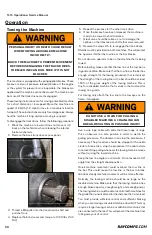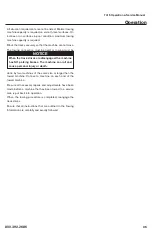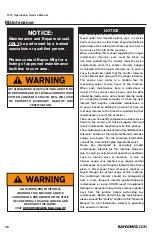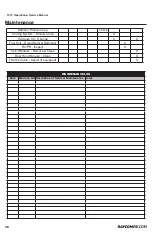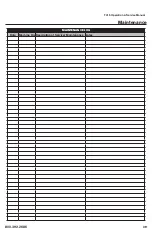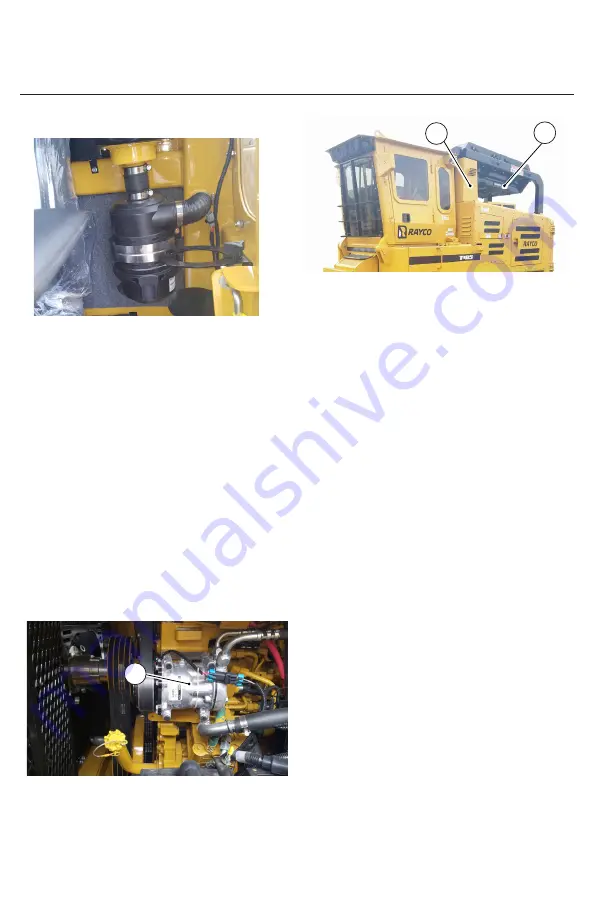
T415 Operation & Service Manual
800.392.2686
45
Maintenance
Air Cleaner for Cab Fresh Air - Clean
This cab fresh air cleaner is located on the inside, left hand
Pull outwards on the clasps of the air cleaner to release the
bottom section. Completely inspect the cleanliness of the
filter. If it is slightly dirty it may be cleaned by lightly tapping
on a hard surface. Replace at stated intervals or when
needed (Rayco filter element # 762823). DO NOT USE
COMPRESSED AIR TO CLEAN OUT FILTER!
In very dusty conditions, check this filter daily and clean or
replace as needed.
Air Conditioning - Check
Visually check the Drier sight glass for bubbles during
operation. There should be a green coloration during
operation. If there is no green coloration present, have the air
conditioning system checked by a certified Air-Conditioning
technician.
System contains: 2 lbs, 14 oz. of refrigerant and 3 oz of
compressor oil.
Location: Compressor pump (8) is on the operator-right side
of the engine. Drier (9) is located inside right tube guard.
The (10) Condenser is mounted inside the limb riser below
the hydraulic oil cooler.
Air Intake Piping - Check
Visually inspect the air intake piping for wear points damage,
loose clamps or punctures that can damage the engine. See
the Engine Manual for details.
Back-Up Alarm - Test
The back-up alarm is mounted to the top rear of the cab. It
is intended to sound whenever either or both tracks move
backward, or when the engine automatically shuts down.
To test:
• Make sure that the area behind the machine is clear of
personnel and obstacles.
• Start the engine. Make sure you are in the seat and
the seat belt is fastened.
• Slightly, pull the speed/direction control lever (LH
joystick) back, as if to back up the machine.
• The back-up alarm should sound immediately. The
back-up alarm should continue to sound until the
joystick is released.
• If the back-up alarm does not function, it should be
repaired immediately.
Brake System - Test
The brakes on your crawler consist of hydrostatic braking
and spring applied, hydraulically released parking brakes. If
the machine has hydrostatic power to climb a slope, it has
sufficient hydrostatic power to brake the machine.
• Climb a slope with the machine.
• Stop on the slope and observe the machine
slowly creep backward. Shallow slopes will not be
enough to allow the machine to creep.
• While observing the machine creep backward down
the slope, apply the parking brake. The brakes should
lock immediately.
• If the brakes appear to malfunction, the cause should
be repaired immediately.
fig.6
fig.7
8
fig.8
10
9




